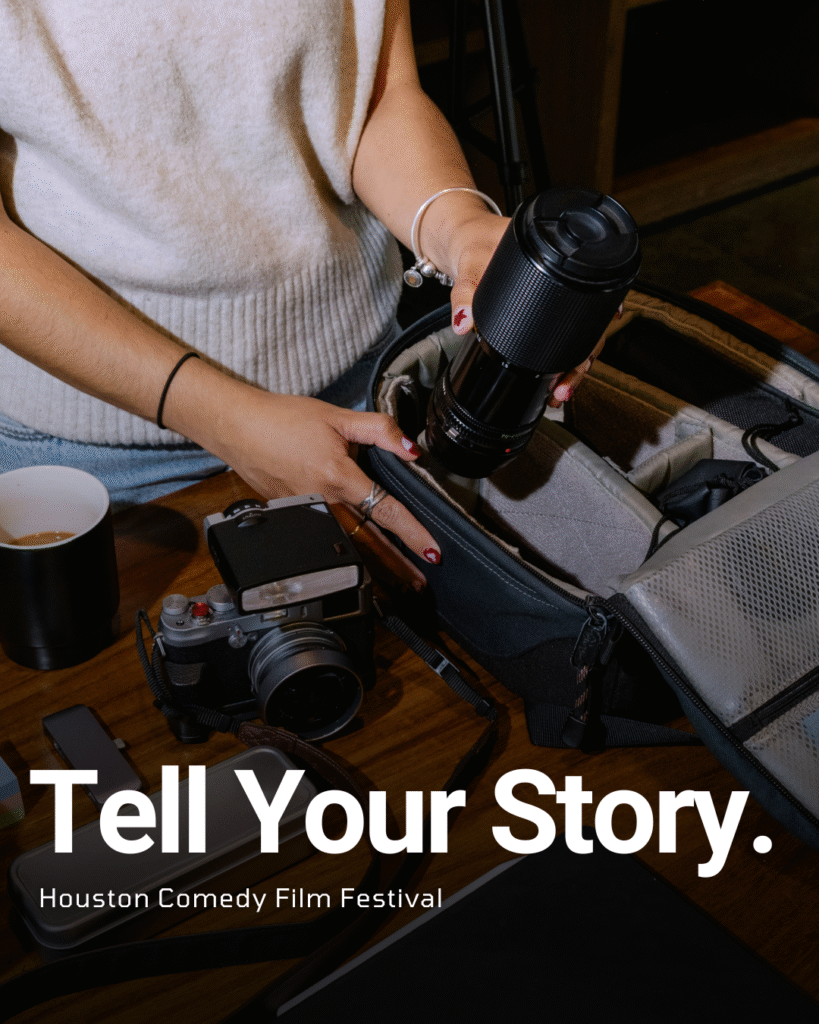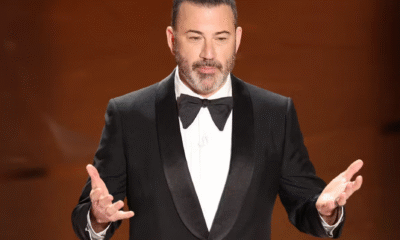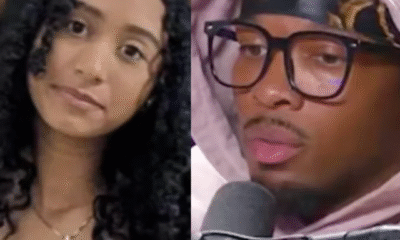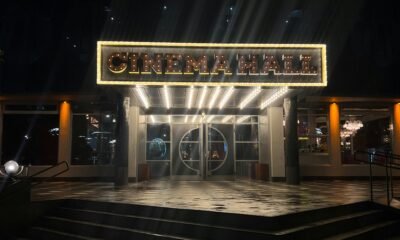Entertainment
Meghan Markle and Prince Harry: We Were NOT Invited to King Charles’ Birthday! And … on November 7, 2023 at 11:40 pm The Hollywood Gossip
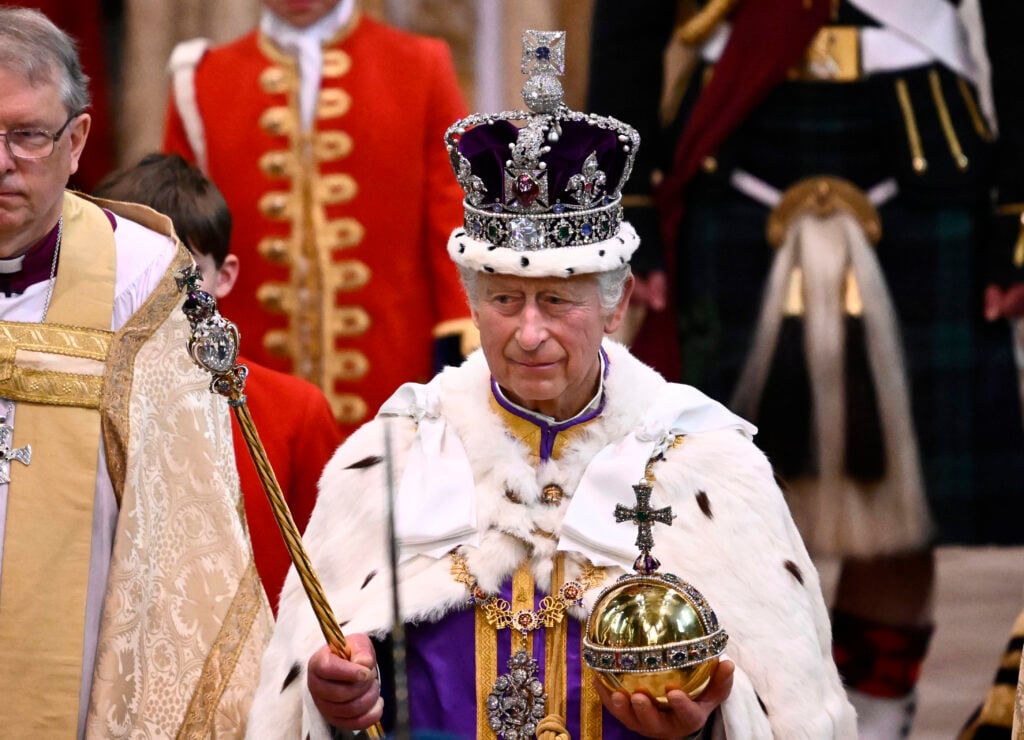
When King Charles was crowned in May of this year, many royal watchers were hopeful that this new era in the history of the British crown might be marked by greater unity and stability within the Windsor clan.
But obviously, that’s not how the last six months played out.
Instead, the rift between the two warring factions seems to be deeper than ever.
And now, it seems that Charles’ upcoming birthday party has become the unlikely scene of the family’s latest battle.
King Charles III departs the Coronation service at Westminster Abbey on May 06, 2023 in London, England. (Getty Images)
Over the weekend, UK newspaper the Sunday Times reported that Harry had turned down an invite to the king’s soiree, which is scheduled for November 14.
“He’ll never not invite his son to a family gathering, because that’s not who he is,” an alleged palace source told the newspaper.
Now, in an unexpected move, reps for Harry and Meghan have hit back with a statement issued to the Daily Mail.
“There has been no contact regarding an invitation to His Majesty’s upcoming birthday,” says the rep.
“It is disappointing the Sunday Times has misreported this story.”
Prince Harry, Duke of Sussex and Meghan, Duchess of Sussex meet with NATO Joint Force Command and families from Italy and Netherlands during day five of the Invictus Games Düsseldorf 2023 on September 14, 2023 in Duesseldorf, Germany. (Photo Credit: Getty Images)
The Mail also spoke with a source “close to the Sussexes” who said:
“They had not received any invitation and were unaware of any celebrations until the stories came out. I’m sure the Duke will find a way to reach out privately to wish His Majesty a happy birthday like he has always done.”
So why the conflicting accounts?
Well, a third source, identified as a “friend of the couple” has a theory.
Meghan Markle and Prince Harry attend the sitting volleyball finals at the Merkur Spiel-Arena during day six of the Invictus Games Düsseldorf 2023 on September 15, 2023 in Duesseldorf, Germany. (Photo Credit: Getty Images)
This person believes that Buckingham Palace officials cooked up the birthday controversy in order to distract from Charles’ recent disastrous trip to Kenya, during which the king was criticized for his unwillingness to apologize for the UK’s history of colonial atrocities in the East African country.
“The story is being positioned in a way to make it look like the Duke is snubbing his father, which he is not,” the insider explains.
“Considering the trip [to Kenya] didn’t go well, this might be a welcome distraction.”
Prince William, Prince of Wales attends the 2023 Earthshot Prize Awards Ceremony on November 07, 2023 in Singapore. (Photo by Chris Jackson/Getty Images)
Speaking of high-profile royal engagements, Buckingham Palace is said to be concerned about the possibility that Harry and Meghan’s statement will overshadow two momentous occasions in the lives of the king and his heir.
Prince William is in Singapore this week to present the Earthshot Awards, his annual prize for the year’s top climate change scientists.
Meanwhile, Charles opened a new legislative session of Parliament, his first time doing so as king.
Of course, the international press is much more focused on the birthday-gate — which might be exactly what Harry and Meghan had in mind when they released their statement today.
Meghan Markle and Prince Harry: We Were NOT Invited to King Charles’ Birthday! And … was originally published on The Hollywood Gossip.
When King Charles was crowned in May of this year, many royal watchers were hopeful that this new era in …
Meghan Markle and Prince Harry: We Were NOT Invited to King Charles’ Birthday! And … was originally published on The Hollywood Gossip.
The Hollywood Gossip Read More
Entertainment
California Bans AI Clones from Replacing Real Talent

California just made a dramatic stand for human creativity, defeating the threat of AI actor clones with a sweeping new law that puts people—not algorithms—back in the Hollywood spotlight. With the stroke of Governor Gavin Newsom’s pen in October 2025, the state has sent a clear message to studios, tech companies, and the world: entertainment’s heart belongs to those who create and perform, not to digital facsimiles.
California Draws a Hard Line: No More AI Clones
For months, the entertainment industry has been divided over the use of artificial intelligence in filmmaking. Studios, lured by promises of cost-cutting and creative flexibility, have invested in software that can mimic an actor’s face, voice, and even emotional range. But for performers, this wave of synthetic reproduction has triggered alarm—encouraged by chilling stories of deepfakes, unauthorized digital doubles, and contracts that let studios reuse a star’s likeness indefinitely, sometimes without pay or approval.
The new California law, anchored by AB 2602 and AB 1836, changes everything:
- Every contract must explicitly detail how studios can use digital replicas or voice models, preventing once-common “blank check” agreements that overlooked this risk.
- No one—not studios nor streaming giants—can create or release AI-generated clones of an actor, living or dead, without clear, written consent from the performer or their estate.
- The law gives families new powers to defend loved ones from posthumous deepfake exploitation, closing painful loopholes that once let virtual versions of late icons appear in new ads, films, or games.
Actors Celebrate a Major Victory
The legislation rides the momentum of the recent SAG-AFTRA strike, where real-life talent demanded control over their own digital destinies. Leaders say these protections will empower artists to negotiate fair contracts and refuse participation in projects that cross ethical lines, restoring dignity and choice in an industry threatened by silent algorithms.
Stars, unions, and advocacy groups are hailing the law as the most robust defense yet against unwanted AI replications.
As one actor put it, “This isn’t just about money—it’s about identity, legacy, and respect for real artists in a synthetic age.”
A New Chapter for the Entertainment Industry
California’s move isn’t just a victory for local talent—it’s a warning shot to studios everywhere. Companies will now be forced to rethink production pipelines, consult legal counsel, and obtain proper clearance before digitally cloning anyone. Global entertainment platforms and tech developers will need to comply if they want to do business in the world’s entertainment capital.

These laws also set a template likely to ripple through other creative fields, from musicians whose voices can be synthesized to writers whose work could be mimicked by generative AI. For now, California performers finally have a powerful shield, ready to fight for the right to shape their own public image.
Conclusion: Human Talent Takes Center Stage
With its no-nonsense ban on AI actor clones, California draws a bold line, championing the work, likeness, and very humanity of its creative stars. It’s a landmark step that forces the entertainment industry to choose: respect real talent, or face real consequences. The age of the consentless digital double is over—human performers remain the true source of Hollywood magic.
Entertainment
Chaos and Comedy: Darby Kingman’s “Camp Wackapoo: Rise of Glog”
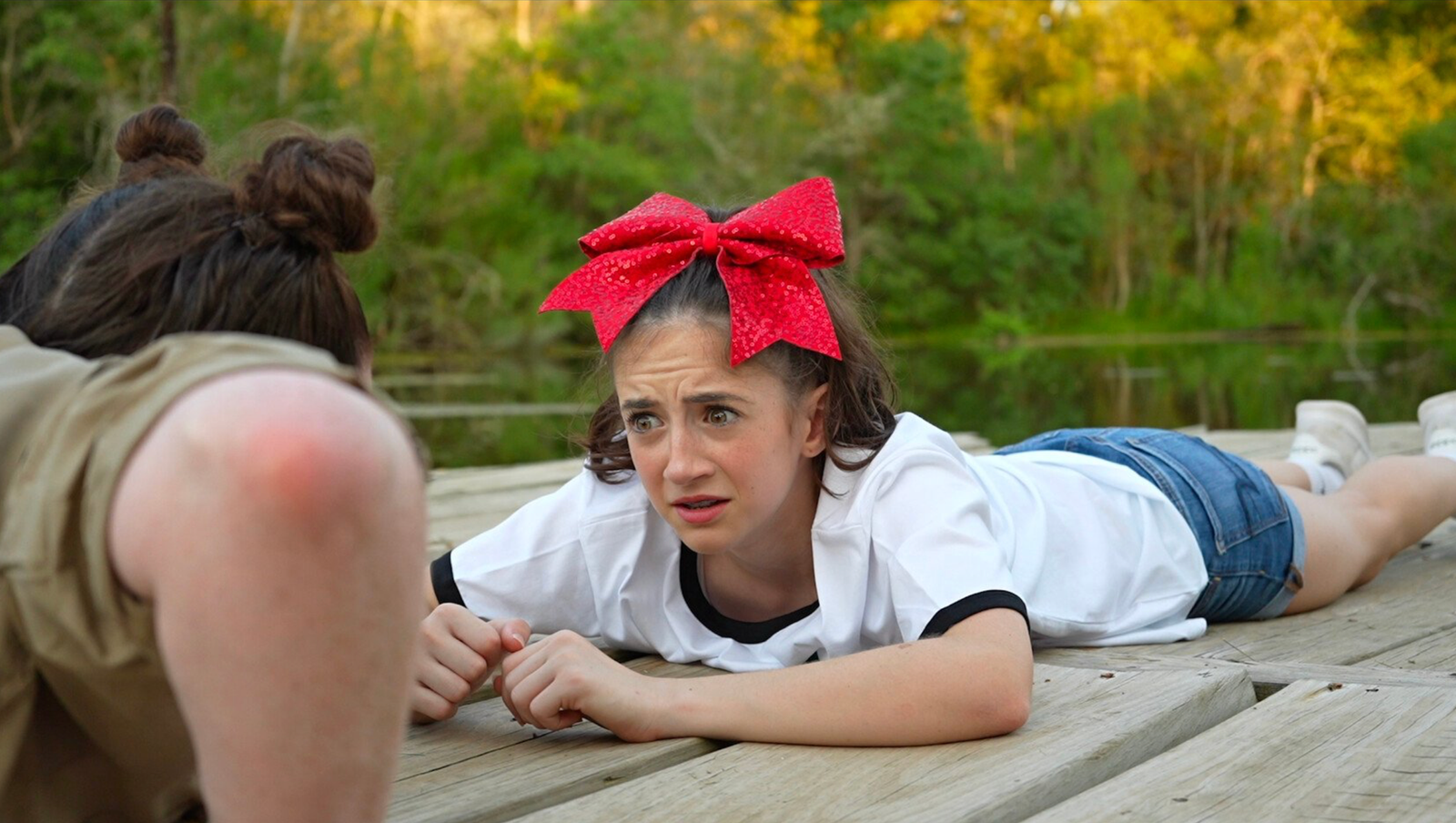
Darby Kingman’s “Camp Wackapoo: Rise of Glog” redefines summer camp comedy with a wild, energetic story about ambition, chaos, and the joy of embracing the unexpected. The film centers on a relentlessly competitive camp counselor who’s determined to finish first—only to face a motley crew of unruly campers and a summer unlike any other.
As Darby puts it, “Not everything is that deep. It really honestly was to make people laugh. She has all these kids that are not working with her and she’s just losing her mind. It’s crazy, silly, goofy, and it was a blast.”
What started as a simple scene for Darby’s acting reel evolved into a full-fledged film with encouragement from her mentor at Debbie Reynolds Acting School. Darby dove into every role—writing, directing, starring, and meticulously preparing each prop and costume. “Plan and prepare, but also be flexible and ready to be in the moment—that’s when the magic happens,” she advises.
Working with a handpicked cast of her own dance students, Darby built an atmosphere of real teamwork and camaraderie. She credits the “precious” energy of her young cast, her creative director of photography, and the overall spirit of her production team for turning the project into something bigger than herself. Her experience is an inspiring blueprint for indie filmmakers:
“Take initiative and control of your career. You can’t just sit around and wait for somebody to pick you. Figure out what you’re good at and go for it. Create something that brings joy to others.”
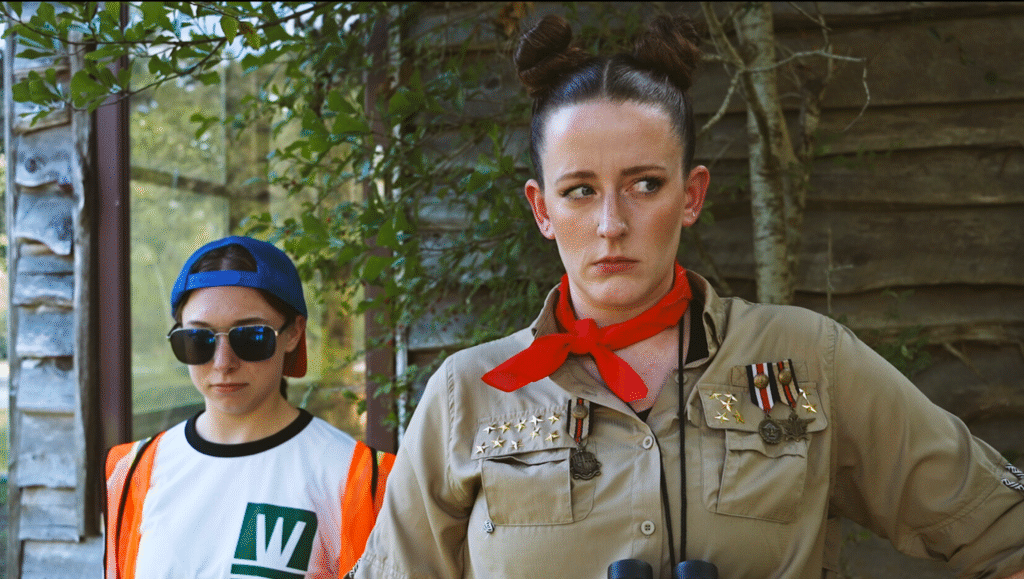
Her production motto? “Preparation is key, but you have to be ready to go with the flow—that’s when the magic happens.” Darby’s fearless creativity, focus on collaboration, and love for comedy shine throughout “Camp Wackapoo: Rise of Glog.” It’s more than just a camp satire—it’s a heartfelt testament to hard work, original humor, and leadership from the ground up: “People need to laugh right now. That’s a win.”
Catch “Camp Wackapoo: Rise of Glog” and experience Darby’s infectious energy and comic genius at the Deluxe Theatre on November 1, 2025. Get your tickets now at Houstoncomedyfilmfestival.com.
Entertainment
Diane Keaton Dies at 79
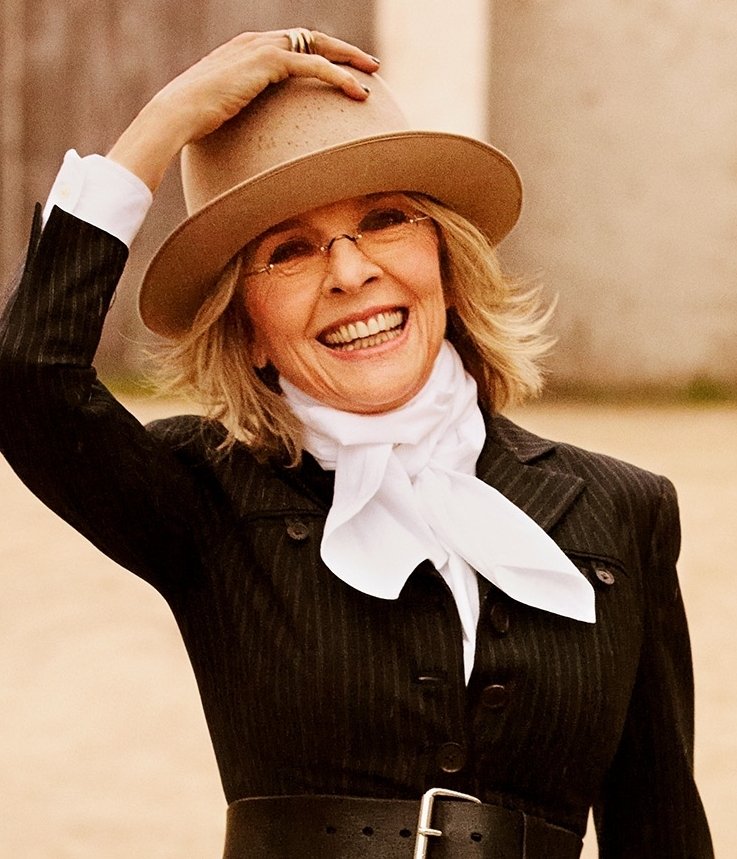
The world of film and entertainment is mourning the loss of Diane Keaton, an Oscar-winning actress renowned for her enduring talent, individuality, and influence on generations of performers and fans. Keaton died at the age of 79 in California on Saturday, October 11, 2025, her family confirmed. Details remain private, with her family requesting privacy as they grieve this profound loss.
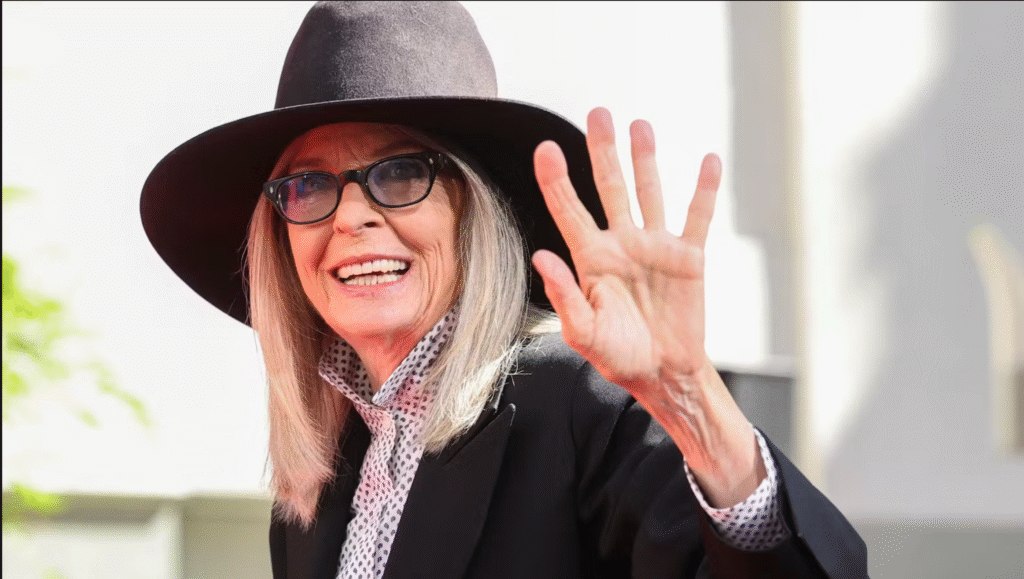
A Distinctive Talent
Diane Keaton rose to fame in the 1970s through a series of memorable roles, most notably as Kay Adams in “The Godfather” trilogy and as the quirky, unforgettable lead in Woody Allen’s “Annie Hall,” for which she won the Academy Award for Best Actress. Her performances in films like “The First Wives Club,” “Something’s Gotta Give,” and the “Book Club” series solidified her reputation as an actress with unique comedic timing and dramatic depth. Keaton was celebrated not only for her artistry but also for her androgynous fashion sense, characterized by menswear-inspired looks, hats, and an easy, effortless style that influenced generations.
Legacy and Tributes
Following the news of her passing, tributes poured in from Hollywood and beyond. Bette Midler, Goldie Hawn, and Jane Fonda were among the countless stars who expressed devastation and admiration for Keaton’s incomparable legacy. Hawn recalled their friendship and collaborations, writing: “Diane, we aren’t ready to lose you…you stole the hearts of the world and shared your genius with millions”. Midler echoed the sentiment, praising Keaton as “brilliant, beautiful, extraordinary” and a truly original presence in Hollywood.

Private Struggles and Final Months
Though fiercely independent and known for her openness, Keaton kept her declining health private in her final months. Friends and neighbors noticed her retreat from public life and social media, and she was recently seen less often in her Brentwood neighborhood. In the past, Keaton candidly discussed her ongoing battles with skin cancer and bulimia, openly advocating for personal health and authenticity.
Remembering Diane Keaton
Diane Keaton leaves behind a legacy defined by her fearless performances, unique style, and enduring influence on the arts. She is survived by her two children, Dexter and Duke. As Hollywood and her global fanbase mourn, her pioneering spirit and unmistakable voice will continue to inspire generations.

 Business3 weeks ago
Business3 weeks agoDisney Loses $3.87 Billion as Subscription Cancellations Surge After Kimmel Suspension

 Entertainment3 weeks ago
Entertainment3 weeks agoWhat the Deletion Frenzy Reveals in the David and Celeste Tragedy

 Entertainment4 weeks ago
Entertainment4 weeks agoABC Suspends ‘Jimmy Kimmel Live!’ Indefinitely After Kirk Remarks

 Entertainment3 weeks ago
Entertainment3 weeks agoExecutive Producer Debut: How Celia Carver Created Festival Hit ‘Afterparty’

 Film Industry4 weeks ago
Film Industry4 weeks agoCan Movie Theaters Steal the Show from Streaming?

 Health3 weeks ago
Health3 weeks agoRussia Claims 100% Success With New mRNA Cancer Vaccine

 News4 weeks ago
News4 weeks agoBody of Missing Teen Found in Tesla Linked to Musician D4vd

 Business4 weeks ago
Business4 weeks agoWhy Small Theaters Are Thriving While the Industry Struggles





